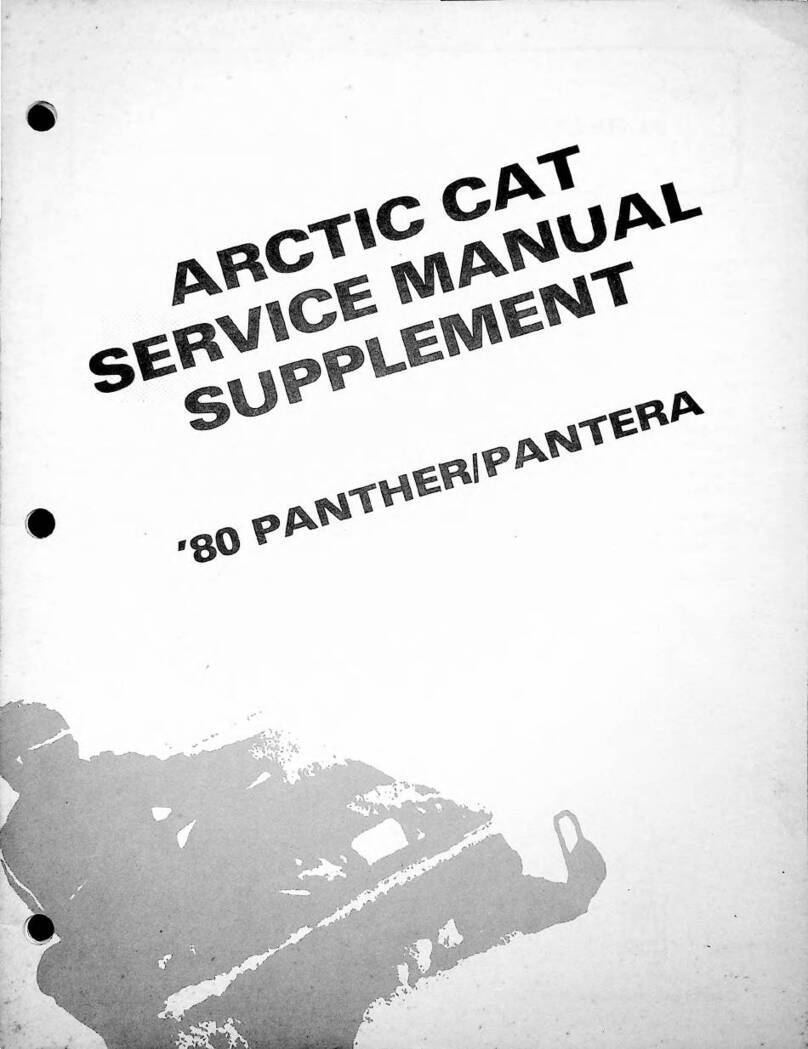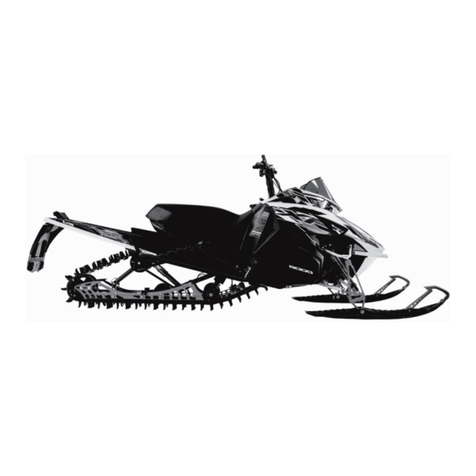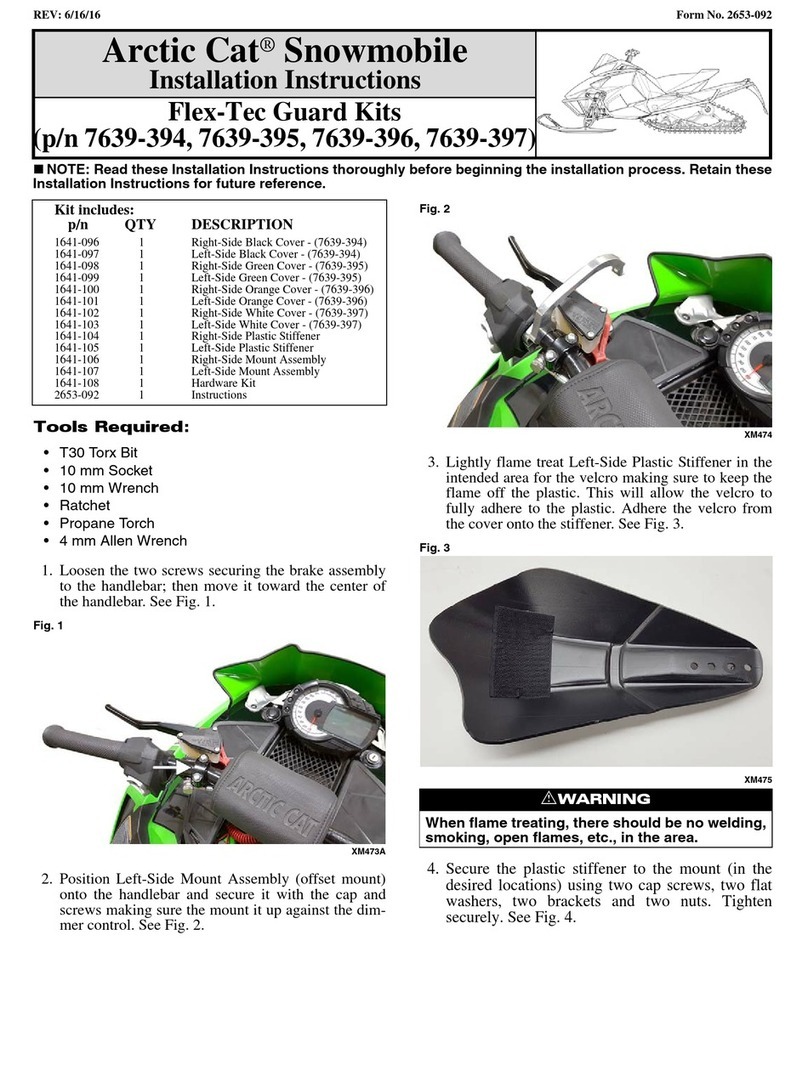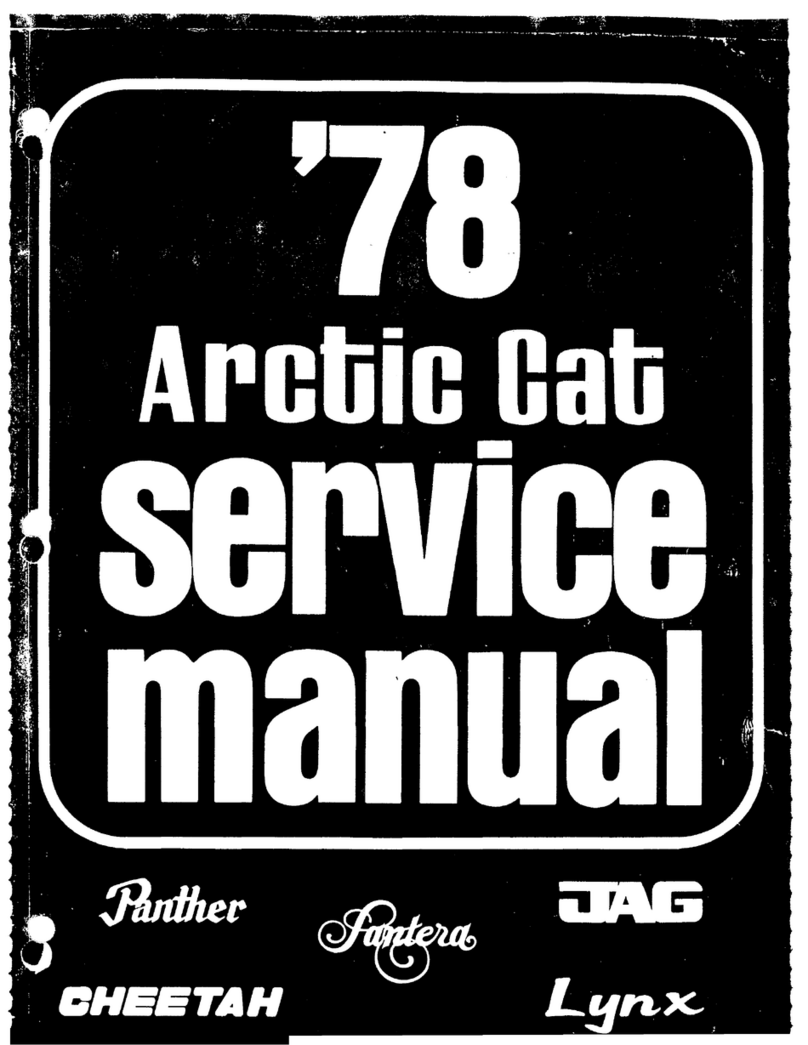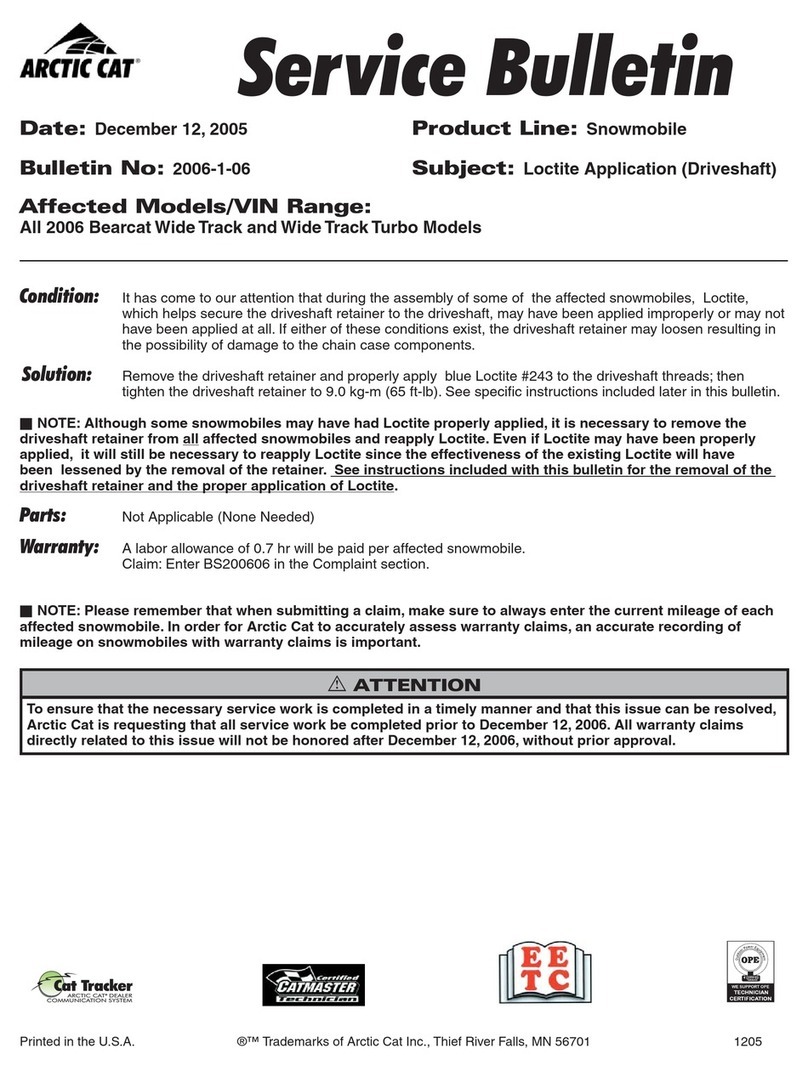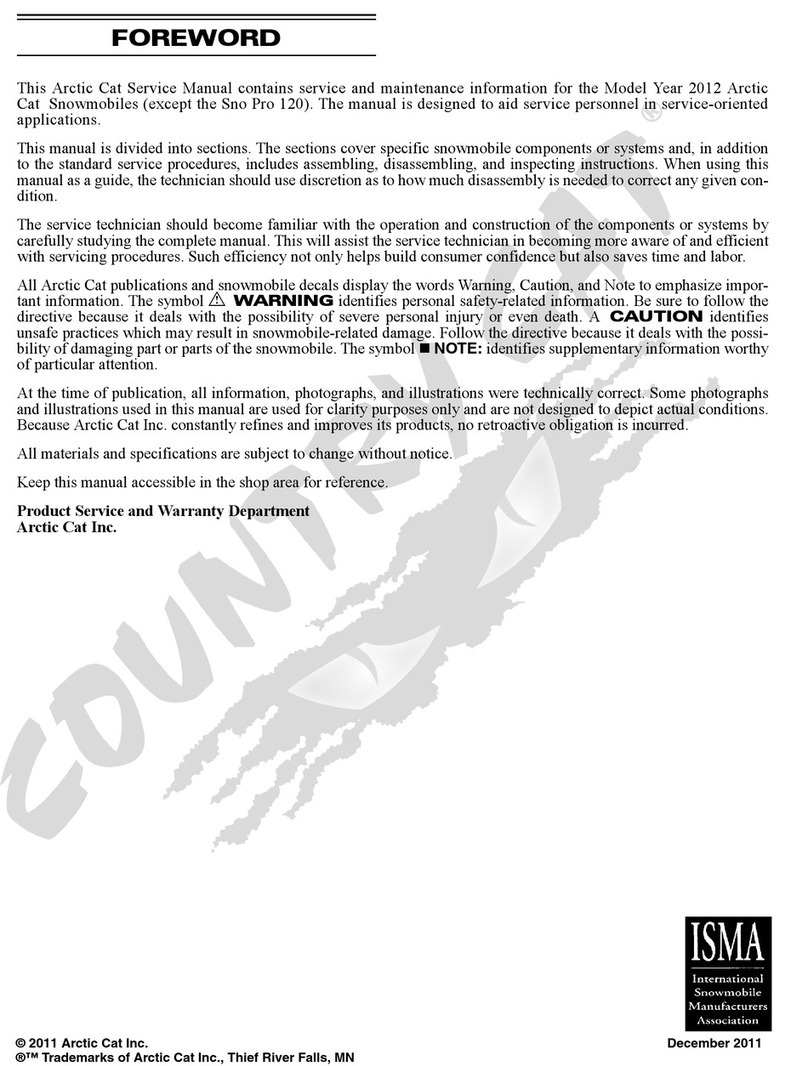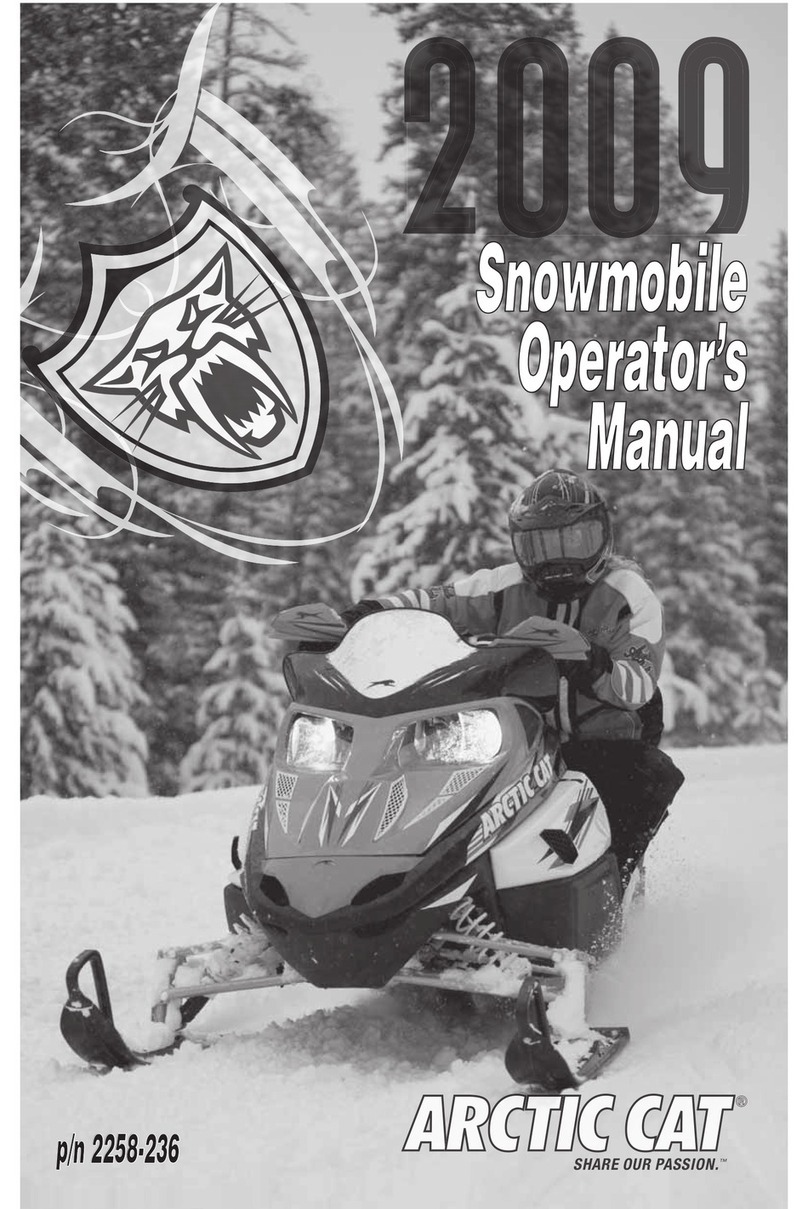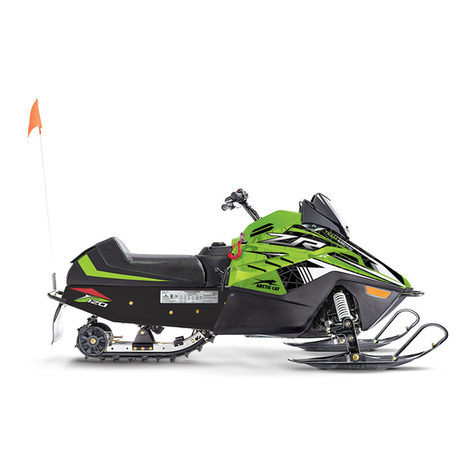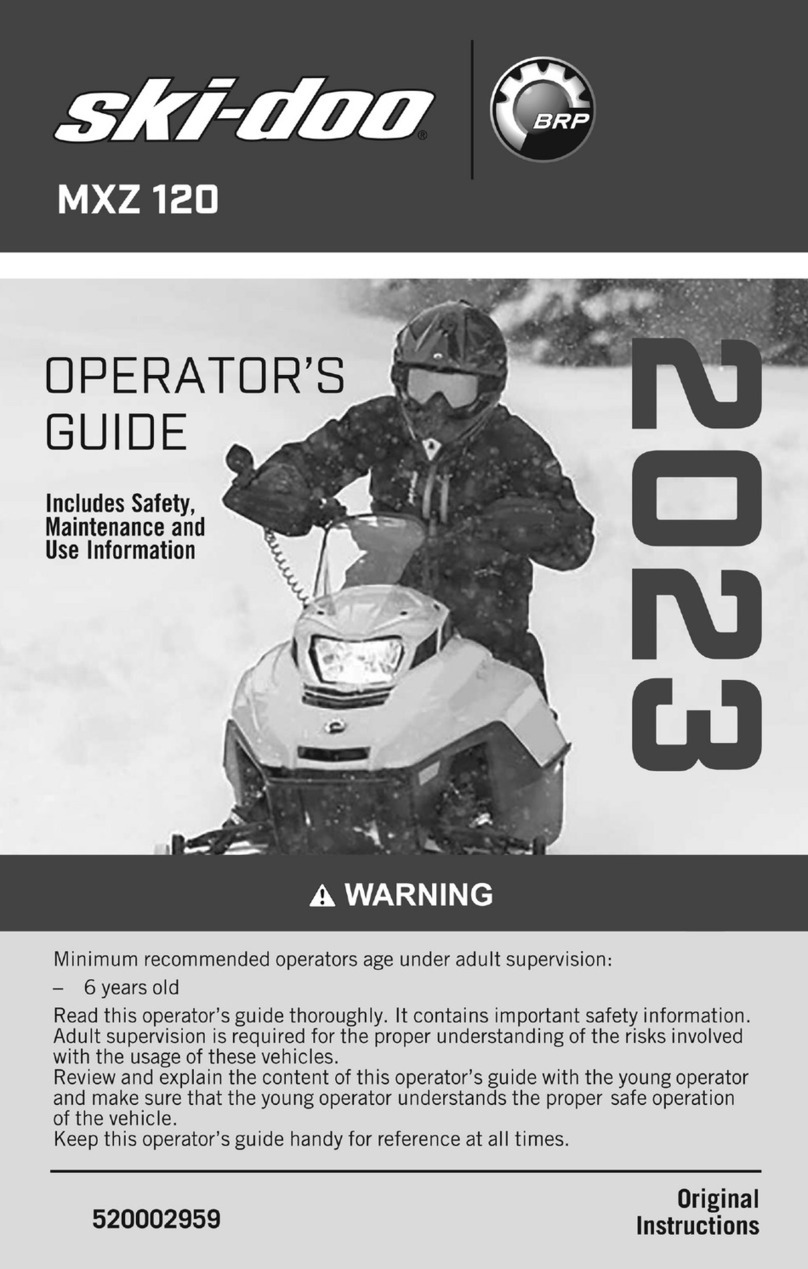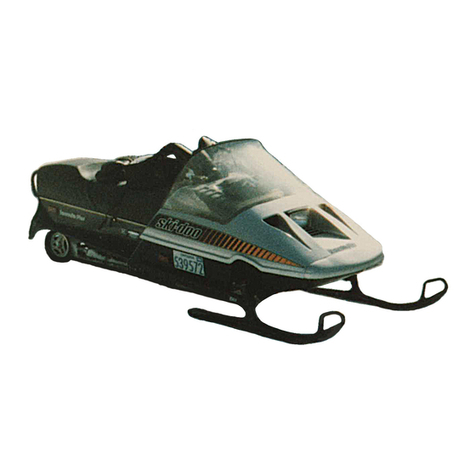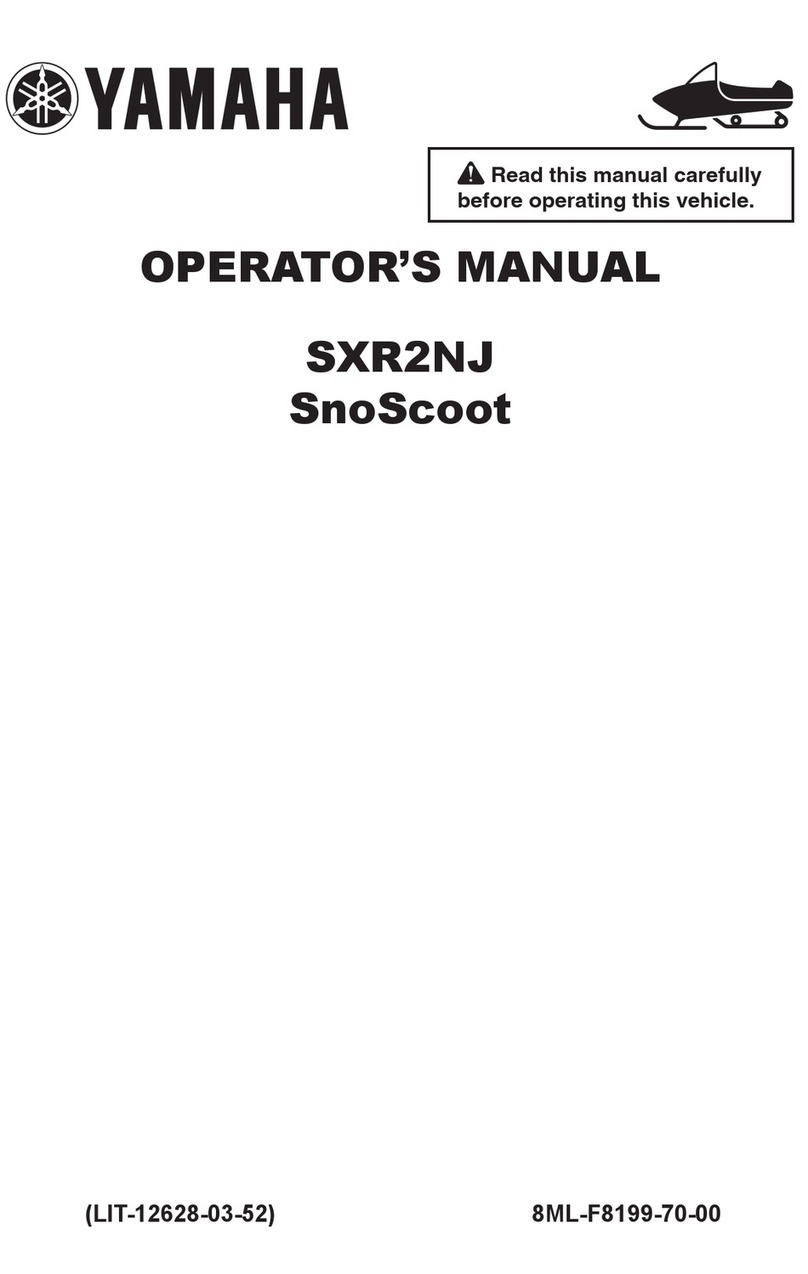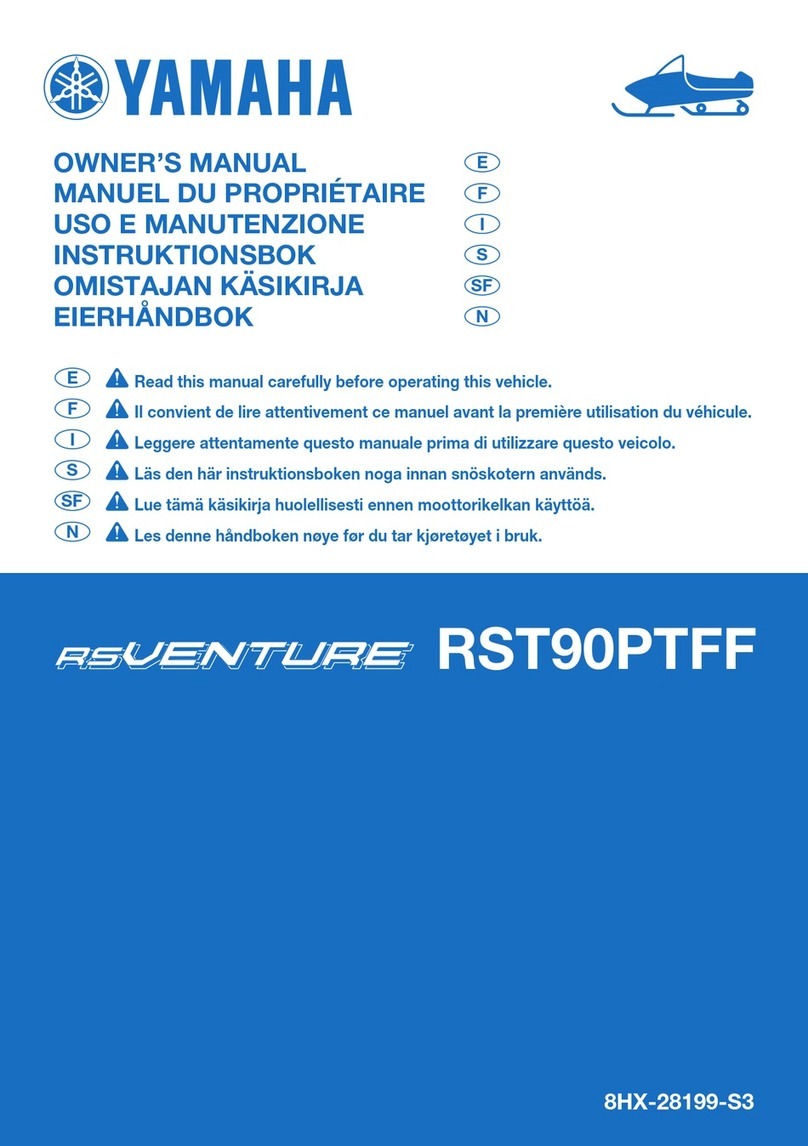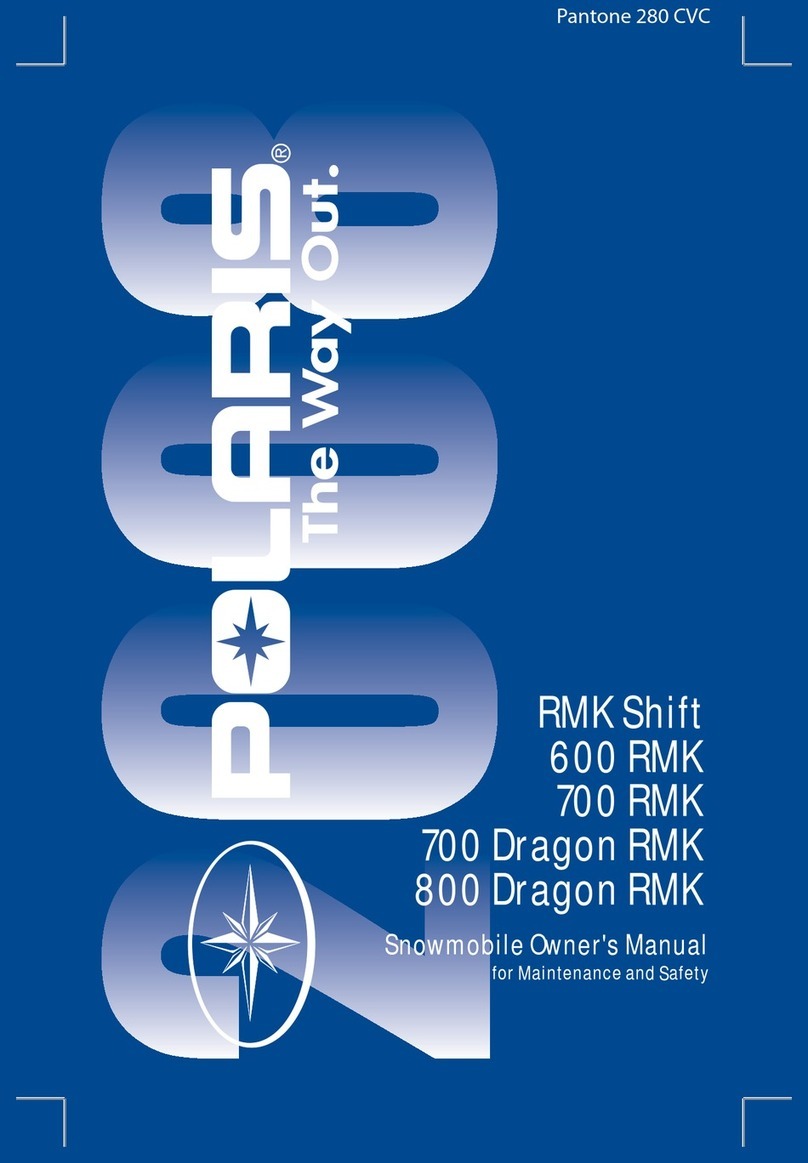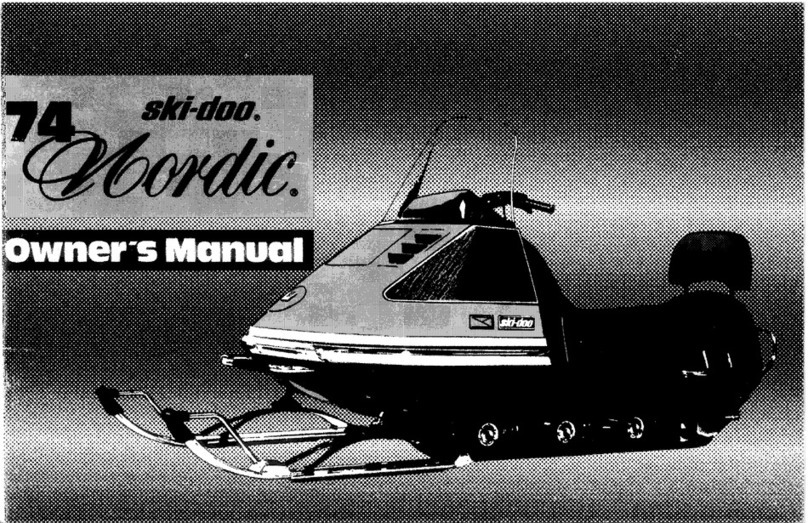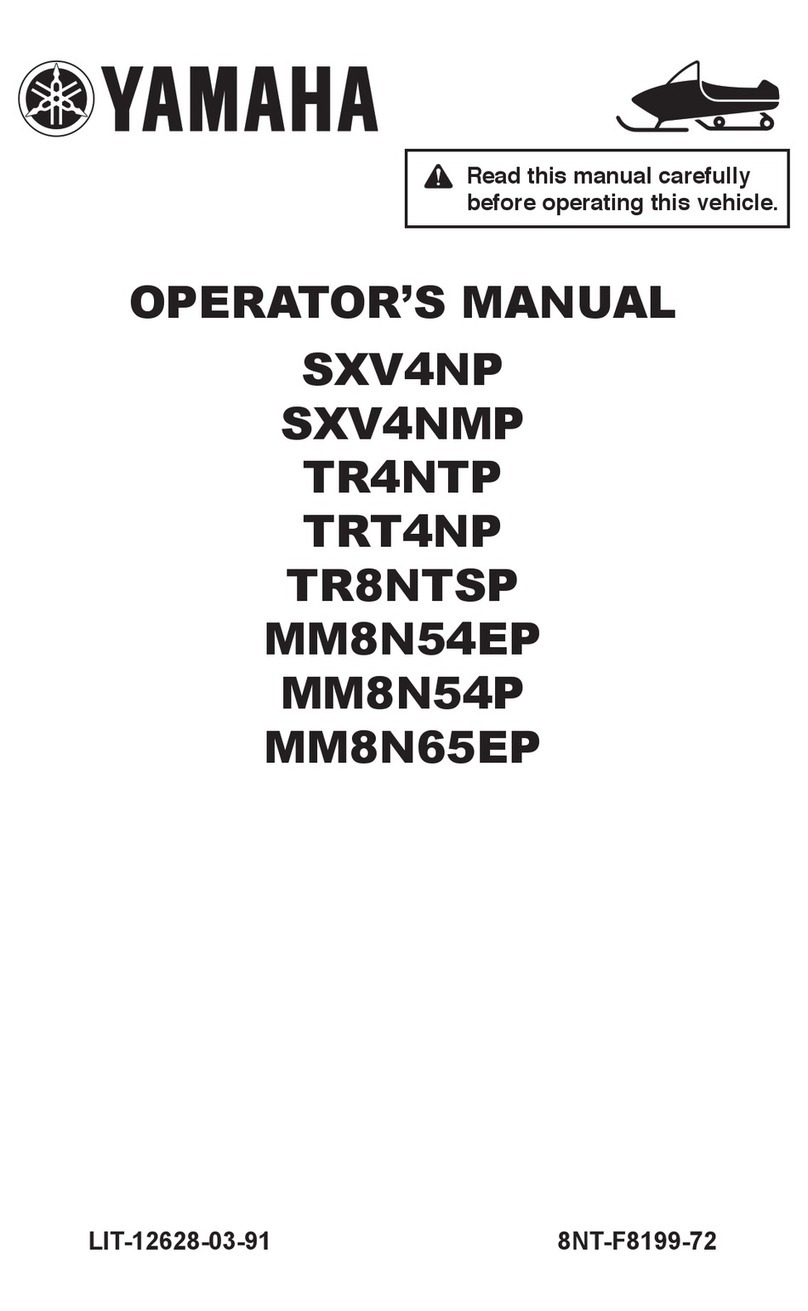
CHAPTER FOUR
ADJUSTMENTS FOR SPECIAL USE
Carburetor tuning. . . . . . . . . . . . . . . . . . . . . . . . . . . . . 125
High-altitude clutch tuning . . . . . . . . . . . . . . . . . . . . . 133
CHAPTER FIVE
125
Gearing . . . . . . . . . . . . . . . . . . . . . . . . . . . . . . . . . . . .
133
Spring suspension adjustment. . . . . . . . . . . . . . . . . . .
133
ENGINE. . . . . . . . . . . . . . . . . . . . . . . . . . . . . . . . . . . . . . . . . . . . . . . . . . . . . . . . . . . .
149
Engine number identification . . . . . . . . . . . . . . . . . . . 149
Engine lubrication. . . . . . . . . . . . . . . . . . . . . . . . . . . . 150
Service precautions . . . . . . . . . . . . . . . . . . . . . . . . . . . 150
Servicing engine
in
frame . . . . . . . . . . . . . . . . . . . . . .
151
Engine removal
..............................
151
Engine mounts
...............................
154
Engine installation. . . . . . . . . . . . . . . . . . . . . . . . . . . . 156
Engine top end
...............................
158
CHAPTER
SIX
Cylinder....................................
166
Piston, piston pin, and piston rings . . . . . . . . . . . . . . 170
Reed valve assembly (1990-1991 El Tigre)
........
180
Reed valve assembly
(437.4, 497, 594 and 599 cc
engines)............
182
Crankcase and crankshaft . . . . . . . . . . . . . . . . . . . . . . 184
Driveshaft for coolant pump
and oil injection pump . . . . . . . . . . . . . . . . . . . . . . .
198
FUEL
SYSTEM-CARBURETED
MODELS
• • • • . • . . . . . . . . . . . • . • • . . • . . . • . . • • . . . . 21 1
Air silencer. . . . . . . . . . . . . . . . . . . . . . . . . . . . . . . . . .
211
Fuel pump . . . . . . . . . . . . . . . . . . . . . . . . . . . . . . . . . . 220
Altitude compensator. . . . . . . . . . . . . . . . . . . . . . . . . . 220
CHAPTER SEVEN
Fuel tank . . . . . . . . . . . . . . . . . . . . . . . . . . . . . . . . . . .
221
Throttle cable replacement . . . . . . . . . . . . . . . . . . . . . 222
FUEL
SYSTEM-FUEL
INJECTED
MODELS
• . . . . . . . . . . • • . . . . . . . . . . . . . . . . • • . . . .
227
Fuel injection system components . . . . . . . . . . . . . . . 229 Testing and troubleshooting
Testing and troubleshooting (EFI system magneto-powered). . . . . . . . . . . . . . . . 242
(EFI powered by battery). . . . . . . . . . . . . . . . . . . . . 232 Component service . . . . . . . . . . . . . . . . . . . . . . . . . . . 246
Adjustments. . . . . . . . . . . . . . . . . . . . . . . . . . . . . . . . . 254
CHAPTER EIGHT
EXHAUST
SYSTEM.
. . . . . . . . . . . . . . . . . . . . . . . . . . . . . . . . . . . . . . . . . . . . . . . . . . .
262
Exhaust system repair . . . . . . . . . . . . . . . . . . . . . . . . . 266
CHAPTER
NINE
ELECTRICAL SYSTEM. • . • • • • • • • • • • • • • . . . . . . . . • . • • • . . . . . . . . . . . . • . . • • . . • •
268
Flywheel and stator assembly . . . . . . . . . . . . . . . . . . . 268
Ignition coil . . . . . . . . . . . . . . . . . . . . . . . . . . . . . . . . . 282
CDI unit. . . . . . . . . . . . . . . . . . . . . . . . . . . . . . . . . . . . 283
Voltage regulator . . . . . . . . . . . . . . . . . . . . . . . . . . . . . 284
Lighting system . . . . . . . . . . . . . . . . . . . . . . . . . . . . . . 284
Instrument assembly . . . . . . . . . . . . . . . . . . . . . . . . . . 285
CHAPTER TEN
Warning lamps. . . . . . . . . . . . . . . . . . . . . . . . . . . . . . . 286
Switches. . . . . . . . . . . . . . . . . . . . . . . . . . . . . . . . . . . . 287
Fuel level sensor . . . . . . . . . . . . . . . . . . . . . . . . . . . . . 289
Oil level gauge
...............................
289
Electric starting motor. . . . . . . . . . . . . . . . . . . . . . . . . 289
Wiring diagrams . . . . . . . . . . . . . . . . . . . . . . . . . . . . . 293
OIL
INJECTION SYSTEM. • . • . • . . • • . • • • • • • • • • • • • • • • • . • . . . . . . . . . . . . . . . . • . .
295
System components. . . . . . . . . . . . . . . . . . . . . . . . . . . 295
Oil pump service . . . . . . . . . . . . . . . . . . . . . . . . . . . . . 295 Component replacement . . . . . . . . . . . . . . . . . . . . . . . 296
Oil pump . . . . . . . . . . . . . . . . . . . . . . . . . . . . . . . . . . . 297

